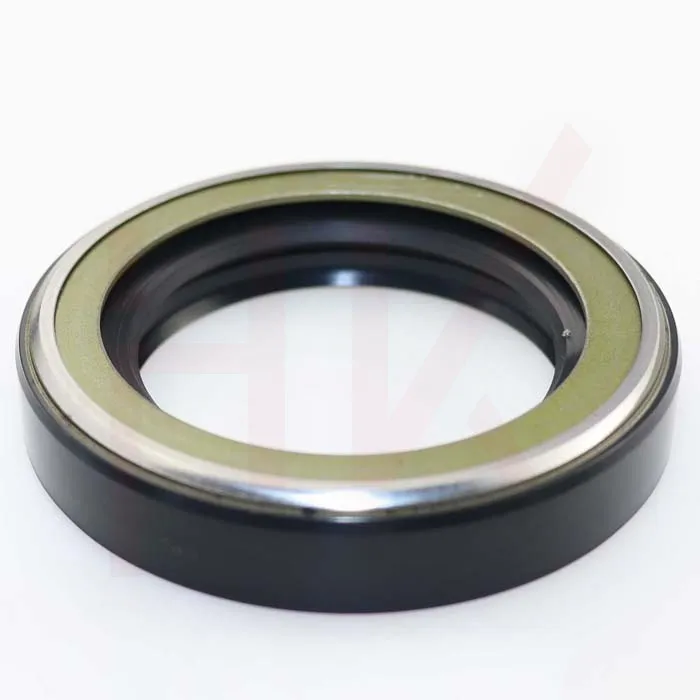Oct . 10, 2024 17:06 Back to list
Understanding Wiper Seals for Hydraulic Cylinders and Their Importance in System Performance
Understanding Hydraulic Cylinder Wiper Seals An Essential Component for Equipment Efficiency
Hydraulic systems are integral to a variety of industries, from construction and manufacturing to automotive and aerospace. At the heart of these systems lie hydraulic cylinders, which convert hydraulic energy into mechanical energy. While much attention is given to the main working components, it is crucial not to overlook the importance of auxiliary elements, particularly wiper seals. These seals play a vital role in ensuring the efficiency and longevity of hydraulic cylinders.
What is a Wiper Seal?
A wiper seal, also known as a scraper seal, is designed to remove contaminants such as dirt, dust, and moisture from the surface of the hydraulic cylinder rod as it retracts. This proactive action is crucial in preventing impurities from entering the hydraulic system, which could lead to premature wear and tear, system failures, and costly repairs. Wiper seals are typically made from durable materials such as polyurethane or rubber, chosen for their resilience against abrasives and a broad range of temperatures.
The Importance of Wiper Seals in Hydraulic Systems
1. Contamination Prevention Hydraulic fluids are sensitive to contamination, and even small particles can cause significant damage over time. Wiper seals act as the first line of defense, protecting the internal components of hydraulic cylinders from particulates. By keeping the cylinder rod clean, they ensure smooth operation and extend the life of the entire system.
2. Operational Efficiency A clean hydraulic rod means less resistance during operation. Wiper seals help maintain optimal performance by reducing friction, which in turn can improve the efficiency of the hydraulic system. This can lead to lower energy consumption and reduced operational costs.
hydraulic cylinder wiper seal

3. Reduced Downtime Regular maintenance and potential repairs can disrupt operations and lead to unplanned downtime. By effectively keeping contaminants at bay, wiper seals contribute to a more reliable operation, allowing systems to run continuously without the fear of hydraulic failure.
4. Cost-Effectiveness Although wiper seals are often an overlooked component in hydraulic systems, their role in prevention is invaluable. Investing in high-quality wiper seals can save significantly in the long run by preventing system failures, reducing repair costs, and extending the life of more expensive components.
Selecting the Right Wiper Seal
Choosing the correct wiper seal depends on several factors, including the operating environment, the type of hydraulic fluid used, and the specific application of the machinery. It's essential to ensure that the seal's material and design are suited for the particular conditions it will face, such as extreme temperatures, pressures, or exposure to chemicals. Working closely with seal manufacturers or suppliers can help identify the best solutions for specific needs.
Conclusion
Wiper seals may be small in stature, but their impact on the efficiency and longevity of hydraulic systems is immense. By preventing contamination, ensuring smooth operation, and reducing downtime, they play a critical role that should not be underestimated. As industries continue to advance, the importance of proper maintenance and selection of components like wiper seals remains a priority for achieving optimal performance in hydraulic systems. Investing in quality seals and following best practices will ultimately lead to enhanced operational efficiency and lower overall costs, solidifying the importance of these vital components in hydraulic machinery.
-
TCN Oil Seal Metal Ring Reinforcement for Heavy Machinery
NewsJul.25,2025
-
Rotary Lip Seal Spring-Loaded Design for High-Speed Applications
NewsJul.25,2025
-
Hydraulic Cylinder Seals Polyurethane Material for High-Impact Jobs
NewsJul.25,2025
-
High Pressure Oil Seal Polyurethane Coating Wear Resistance
NewsJul.25,2025
-
Dust Proof Seal Double Lip Design for Construction Equipment
NewsJul.25,2025
-
Hub Seal Polyurethane Wear Resistance in Agricultural Vehicles
NewsJul.25,2025
-
The Trans-formative Journey of Wheel Hub Oil Seals
NewsJun.06,2025
Products categories
















